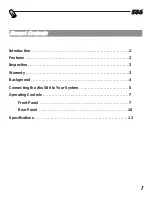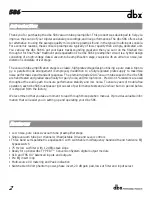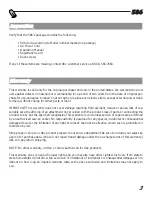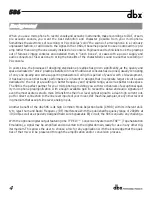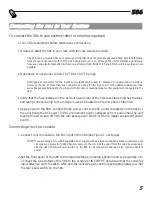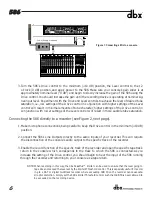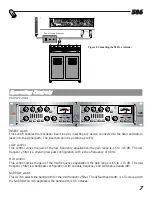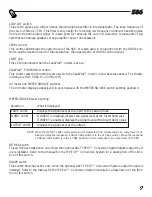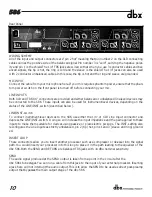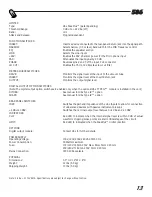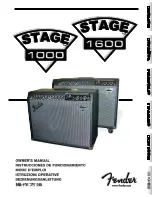
586
¨
When you use a microphone to record vocals and acoustic instruments, make recordings to DAT, or sam-
ple acoustic sounds, you want the best definition and character possible from your microphone.
Sometimes the electronics of recording or PA consoles “color” the sound of a microphone in a curiously
unpleasant fashion, or add noise to the signal. In the 1960s, it became popular to use an outboard mic pre-
amp rather than using the one usually installed on a console. Engineers and technicians took the preamps
out of famous vintage consoles and installed them in “lunch boxes”, or cases with a power supply and
audio connectors.This was done to bring the benefits of the characteristic sound to another recording or
PA console.
In years since, the business of designing stand-alone preamps has grown significantly, as the quality and
space dedicated to “stock” preamps installed in most middle-cost consoles has declined, usually consisting
of only one op-amp and some supporting transistors. During this period of years’ worth of development,
it has been proven that better performance is inherent in designs that incorporate larger circuit boards
dedicated to the mic pre, resulting in better frequency and dynamic range, as well as better noise specs.
The 586 is the perfect partner for your microphone, providing you with two channels of exceptional qual-
ity microphone preamplification with enough available gain to reveal the detail and audio signature of
even the most esoteric studio mics. It transforms their low level output signal to a clean high current out-
put for direct connection to the line level inputs of your mixer, DAT machine, sampler, or any other record-
ing medium that accepts line level, analog input.
Another benefit of the dbx 586 is its high Common Mode Rejection Ratio (CMRR) with its inherent abili-
ty to reject hum and Radio Frequency (RF) interference.With the published frequency range of 200kHz at
+0/-3dB, as well as a specially designed hard wire bypassable EQ circuit, the 586 is equal to any challenge.
With the optional digital output featuring dbx TYPE IV™ Conversion Syatem with TSE ™ (Tape Saturation
Emulation), a signal may be amplified and converted to the digital domain, ready for use in any other dig-
ital medium.This allows the user to choose a mic for any application with the knowledge that the quali-
ties of that mic will be preserved through the amplification and/or conversion process.
Ba
ac
ckgro
ound
4
¨



